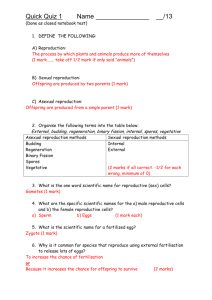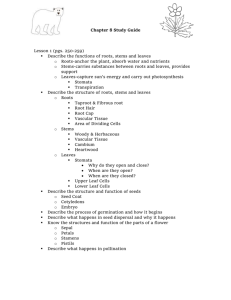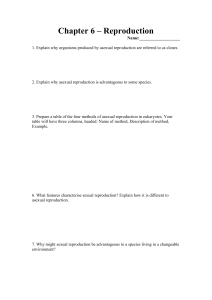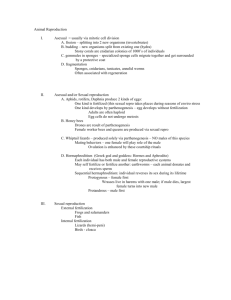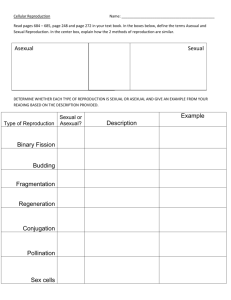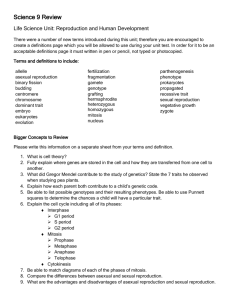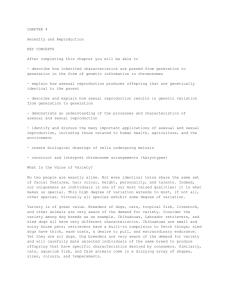Assignment 3 - Science 9 Portfolio
advertisement
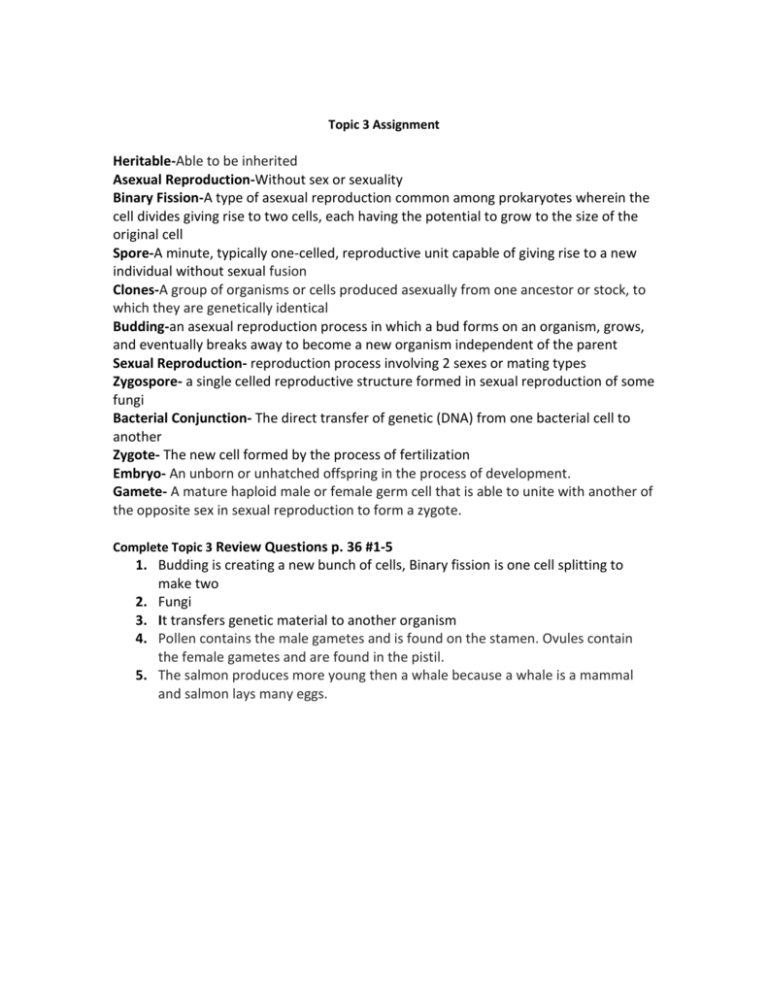
Topic 3 Assignment Heritable-Able to be inherited Asexual Reproduction-Without sex or sexuality Binary Fission-A type of asexual reproduction common among prokaryotes wherein the cell divides giving rise to two cells, each having the potential to grow to the size of the original cell Spore-A minute, typically one-celled, reproductive unit capable of giving rise to a new individual without sexual fusion Clones-A group of organisms or cells produced asexually from one ancestor or stock, to which they are genetically identical Budding-an asexual reproduction process in which a bud forms on an organism, grows, and eventually breaks away to become a new organism independent of the parent Sexual Reproduction- reproduction process involving 2 sexes or mating types Zygospore- a single celled reproductive structure formed in sexual reproduction of some fungi Bacterial Conjunction- The direct transfer of genetic (DNA) from one bacterial cell to another Zygote- The new cell formed by the process of fertilization Embryo- An unborn or unhatched offspring in the process of development. Gamete- A mature haploid male or female germ cell that is able to unite with another of the opposite sex in sexual reproduction to form a zygote. Complete Topic 3 Review Questions p. 36 #1-5 1. Budding is creating a new bunch of cells, Binary fission is one cell splitting to make two 2. Fungi 3. It transfers genetic material to another organism 4. Pollen contains the male gametes and is found on the stamen. Ovules contain the female gametes and are found in the pistil. 5. The salmon produces more young then a whale because a whale is a mammal and salmon lays many eggs. Reproductive Strategies Quiz A 1. an asexual reproductive structure of flowering plants B spore 2. unspecialized cells in the tips of roots and stems zoospore 3. reproductive cell found in mould clone 4. method of asexual reproduction used by bacteria meristem 5. how yeast reproduces bulb 6. identical offspring produced from a single cell or tissue binary fission 7. female reproductive structure of a flower budding 8. asexual spores produced by the alga Chlamydomonas pistil Fill in the Blanks 9. Complete each statement with the correct term Traits that are passed on from one generation to the next are said to be genes Bread mold can reproduce sexually by forming structures called spores Frogs reproduce by external fertilization, and deer reproduce by internal fertilization. One bacterial cell transfers genetic material to another bacterial cell in a process called Bacterial Conjunction An advantage of Sexual reproduction is that the offspring inherit a combination of traits from two parents.
